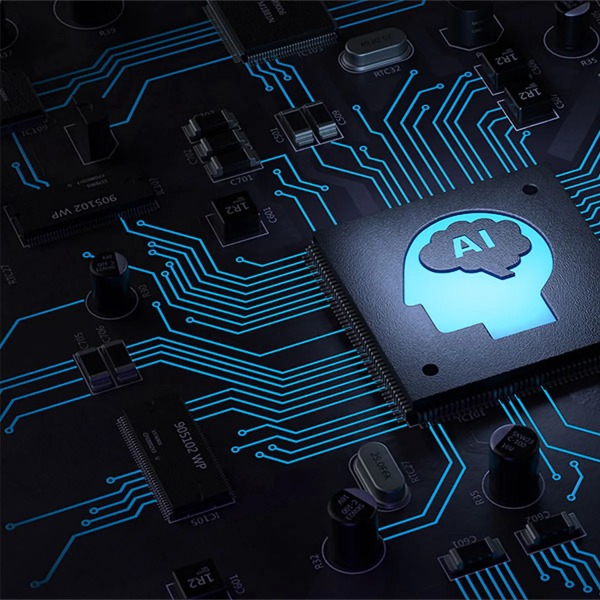As cyber threats become more sophisticated, companies are turning to new technologies like security tools powered by artificial intelligence (AI) to help protect their data. The use of AI-powered cybersecurity solutions has become more of a necessity, due to the evolved nature of cyberattacks.
In her article on how to find the right AI-powered cybersecurity Solution for your security needs, Elizabeth Ekedoro stated that OpenAI’s ChatGPT launch sparked discussions on AI’s role in cybersecurity, with 54% of professionals planning AI integration, and as such, it has become important to note the variation in AI-powered cybersecurity products, and areas for improvement.
AI-Powered Cybersecurity Solutions are intelligent, leveraging advanced algorithms to identify and mitigate online threats. However, each of these products has its advantages and disadvantages.
TOP 2 AI-Powered XDRs – Cortex XDR and FortiXDR
In today’s article, we’ll be focusing on the Top two AI-powered XDRs, Cortex XDR and FortiXDR, comparing their capabilities, benefits, and potential areas for development.
Palo Alto Networks Cortex XDR as an AI-Powered Cybersecurity Solution:
According to Palo Alto, Cortex XDR integrates network, endpoint, and cloud data natively to combat advanced threats. Using behavioral analytics, Cortex XDR reliably identifies risks and identifies the underlying reason to speed up investigations. Cortex XDR streamlines the entire security process by enabling faster incident response and mitigation through integrated functions like forensics and identity threat detection and response.
Palo Alto Networks has been reaffirmed as a Leader after being identified as a top contender in the 2023 Gartner® Magic QuadrantTM for Endpoint Protection Platforms (EPP) report.
How does Palo Alto’s Cortex XDR leverage AI?
Cortex XDR uses AI to analyze endpoint activity and spot suspicious behaviors, even blocking new malware. It also uses machine learning to detect patterns and anomalies that could signal a cyberattack. The AI models are always getting better as Cortex XDR faces new threats, and it automates tasks like data correlation to help security teams focus on critical threats. This shows how AI helps Cortex XDR find and tackle threats, making things easier for security teams.
Pros of Cortex XDR
Some of the reasons why people enjoy their use of Cortex XDR includes:
- It has successfully blocked a few malicious child processes, zero-day exploits, and hashed data.
- It gives direct access to devices through Live Terminal, which offers scripting, triage, and evidence preservation for operations.
- It has a behavioral Indicator of Compromise, which sends out notifications about activities involving host groups and signatures.
- It provides ease for searching through large, multi-device datasets for network connections, hashes, DNS, and other information.
Cons of Cortex XDR
- Cortex XDR is expensive, especially for large deployments.
- The user interface loads significant data in each window pane, leading users to scroll or adjust queries for more manageable results. The presented data can feel overwhelming, and alerts do not consistently indicate IOCs.
- XDR’s performance fluctuates during query execution, and the available features do not expedite the hunting process.
- It was also observed that deployment of the agent via SCCM can have downstream consequences.
Over the course of research, concerns were around, Traps, which serves as a foundational element for endpoint security within the larger XDR platform were observed. Traps gives a lot of good insight on what’s being run on endpoints, however, according to a review on Trust Radius, a user noted two things:
Exceptions may need to be established since traps can cause problems with some legacy or custom programs.
Though it doesn’t happen frequently, traps occasionally mistakenly label non-malicious activities as malicious.
Areas for Improvement for the Cortex XDR
- Cost can be a bit of a hurdle, especially for bigger setups. It’d be awesome if they could figure out a way to make it more budget-friendly for all kinds of organizations.
- Nobody likes it when things get glitchy, right? They should work on making sure Cortex XDR runs like a well-oiled machine, especially when you’re digging for threats. Consistency is key!
- Now let’s discuss setting up that agent. The intention is smooth sailing, but circumstances might be challenging, particularly when using SCCM. It would be less stressful for everyone if that process were simplified.
Fortinet FortiXDR:
FortiXDR uses eXtended Detection and Response (XDR) to improve the Fortinet Security Fabric. To be more precise, it looks for possible security events by analyzing information flows from your Fortinet devices that are connected to security and audit.
How does FortiXDR leverage AI?
The goal of FortiXDR is to advance its Extended Detection and Response (XDR) capabilities by utilizing AI. FortiXDR has this sleek Dynamic Control Flow Engine powered by AI that swoops in to examine risks all on its own, freeing up the pros to tackle the heavier things, rather than overwhelming security analysts with every alarm. It continuously learns from Fortinet’s FortiGuard Labs threat intelligence service to be vigilant against the newest online threats.
Speaking of alert overload, the AI engine of FortiXDR steps in to sort through the clutter, eliminating false warnings and putting the most serious dangers front and center. Oh, and did I also mention that it can even engage in automated responses, such as blocking dubious traffic or quarantining infected devices?
Pros of FortiXDR
A user dropped a review on Peerspot saying the best thing about FortiXDR is how effectively it works with other Fortinet products, including switches, access points, FortiMail, FortiSandbox, and Forti Fabric. Regardless of the direction in which traffic flows, it can all be effectively regulated and observed.
Cons of FortiXDR
FortiXDR works well with Fortinet products, but it might not work as well with other suppliers.
If Fortinet products are heavily relied upon for complete functionality, this could result in vendor lock-in and make switching to other security solutions more difficult.
A review on Peerspot also highlighted that FortiXDR and FortiManager must be used as a pair. A customer will need to add FortiManager and use FortiXDR in conjunction with it if they only have firewalls and no FortiManager, which led to their rating score of six out of 10.
Areas of Improvement for FortiXDR
Fortinet should consider providing more flexible licensing options or creating features that facilitate simpler integration with security products from other vendors to address concerns over vendor lock-in.
Although FortiXDR performs admirably within the Fortinet environment, more third-party security tool integration would make it more appealing to enterprises that use a variety of security providers
Comparing AI-Powered Cybersecurity Solutions: Cortex XDR VS FortiXDR
While Cortex XDR and FortiXDR are both incredible AI-powered Cybersecurity solutions, there are certain similarities in these products. A few of them include:
Reviews surrounding both products highlighted the complexity of the UI in both products.

The two charts present ratings that are consistent across a number of areas, such as the following: quality of end-user training; ease of deployment; ease of integration utilizing standard tools and APIs; and availability of third-party resources. Various subcategories emphasize the advantages of both Cortex XDR and FortiXDR in satisfying customer expectations and requirements in various domains, reflecting elements essential to the integration and deployment processes of cybersecurity solutions.
Conclusion
While AI-powered cybersecurity Solutions like Cortex XDR and FortiXDR provide sophisticated threat detection and response capabilities, choosing the best defense against changing cyber threats requires an understanding of each tool’s advantages, disadvantages, and potential improvement areas.





